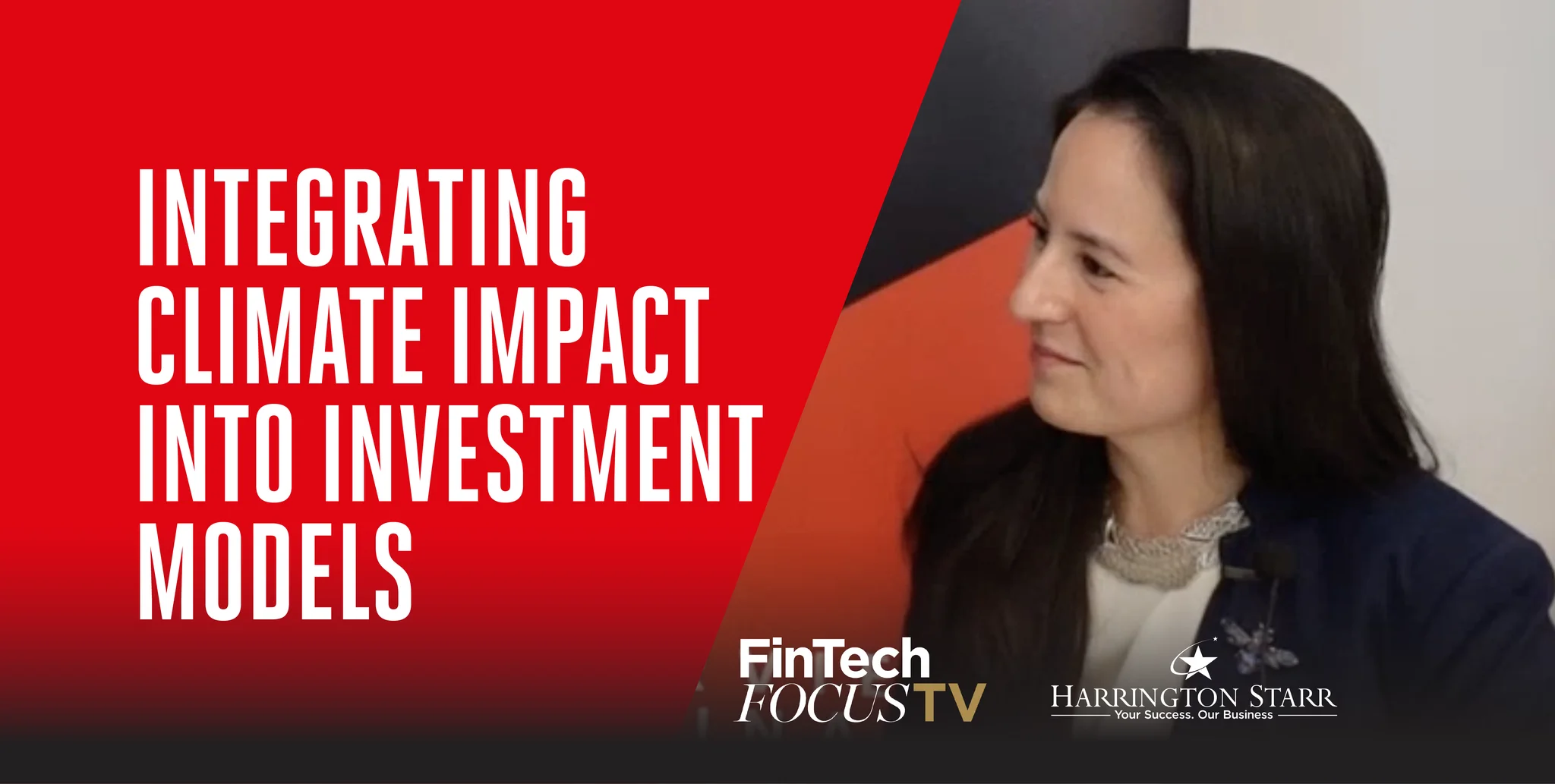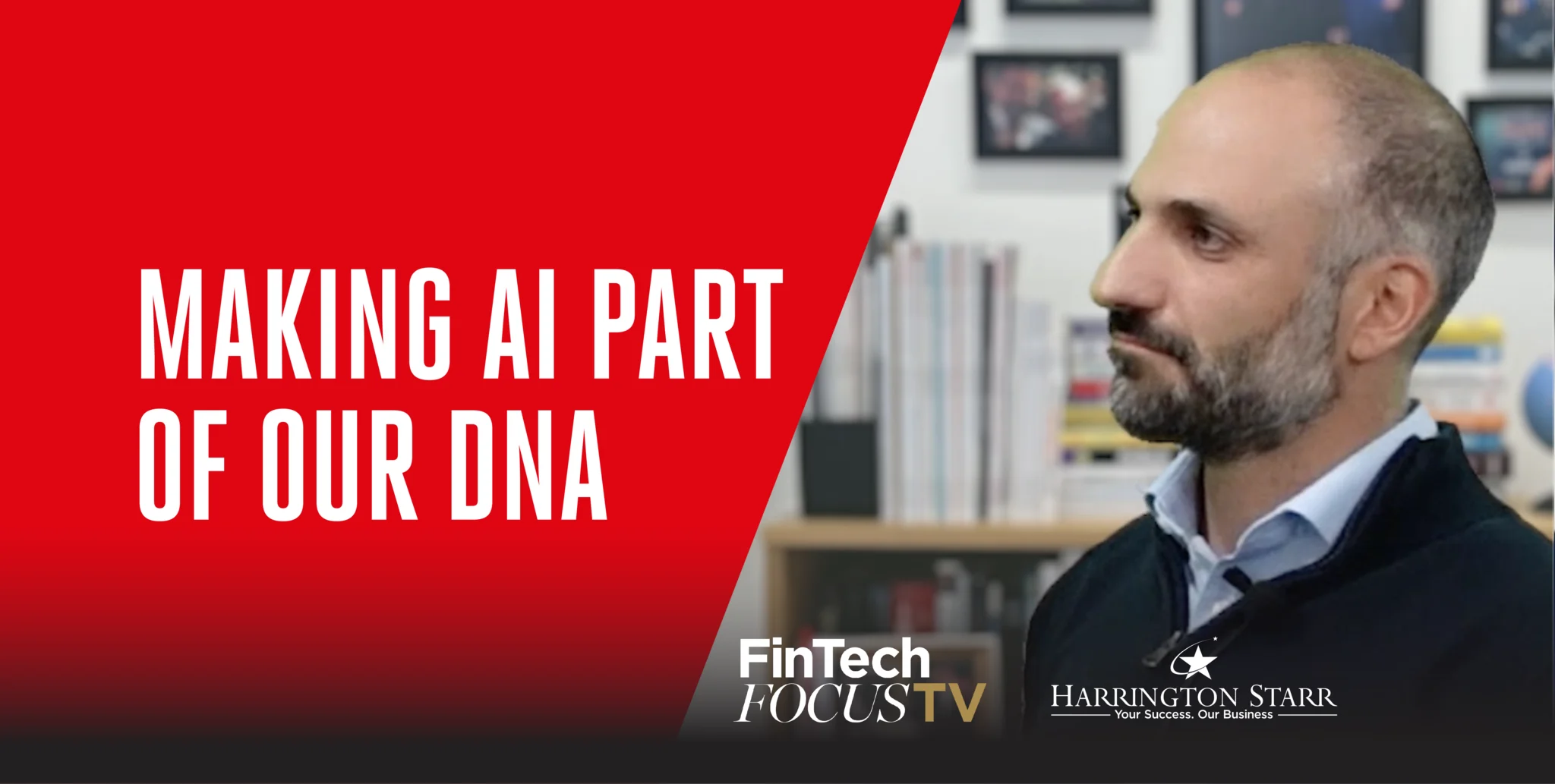
FinTech Climate Modelling and the Future of Investment
Recorded live at Quant Strats 2025, this episode of FinTech Focus TV brings together host Lucia and Antonia Lim, Chief Investment Officer at Impact Cubed, for a deep, data-led exploration of how climate risk is reshaping financial modelling, asset valuation and investment strategy across the global financial technology landscape.
For Harrington Starr, a FinTech recruitment business working at the intersection of quantitative finance, climate data, investment modelling and financial technology, this conversation offers a timely and critical view on the future skills the sector urgently needs.
The Role of FinTech in Sustainable Investment and Climate Data
The episode begins with Antonia introducing the work of Impact Cubed, a sustainable investment advisory firm that builds its value proposition on proprietary data. The company collects and cleans its own datasets, building tools that support investment selection, security analysis, fund selection, monitoring and performance reporting. It also co-creates custom indices for both active and passive investors.
This foundation is extremely important in the context of FinTech. As the financial sector becomes more reliant on data, the granularity, cleanliness and structure of that data are becoming sources of competitive advantage. Climate data, in particular, is no longer something that sits outside the core investment process. Instead, it is becoming a fundamental component of risk evaluation and return forecasting.
When Lucia asks why climate risk modelling is such a hot topic, Antonia summarises it with precision: climate affects price. That statement alone reframes the entire conversation. Climate modelling is not a branding exercise or an ESG add-on. It is a valuation variable. It determines how companies perform, how they are priced and how investors evaluate long-term potential.
As a result, the value of climate-literate quants, analysts and investment professionals is rising rapidly. For FinTech recruitment, this marks a pivotal shift: firms now seek talent that can integrate climate exposure directly into financial models.
How Climate Risk Translates to Asset Valuation in Financial Markets
One of the most compelling explanations in the episode is when Antonia breaks down how climate risk interacts with traditional investment models. Rather than relying on cutting-edge quantitative tools, she uses a simple, familiar framework: the residual income model.
This model takes book value, adds the present value of future residual income and produces an estimate of equity value. But within that book value lies something critically important to climate risk: the assets themselves. Antonia explains that many companies’ valuations rely on large amounts of property, plant and equipment (PPE), real physical assets that are vulnerable to extreme weather.
If severe weather strikes, a cyclone, flood or other physical climate event, those assets may be damaged. Damaged assets reduce their book value. Reduced book value weakens the balance sheet. A weakened balance sheet reduces the equity valuation. And ultimately, that reduction affects the share price.
In Antonia’s words, it doesn’t have to be the most sophisticated model to see the impact. Even the simplest valuation frameworks reveal the climate’s effect on price. Climate becomes a part of the financial future whether investors acknowledge it or not.
This is a powerful insight for the quant community. Quants rely on cause-and-effect relationships to price assets and structure portfolios. Climate risk introduces a new variable into that chain of cause and effect. It is measurable. It is material. And it is financially consequential.
Transition Risk and Revenue Growth in a Changing Economic Environment
The conversation then moves into transition risk, which refers to the economic and regulatory changes associated with the shift to a low-carbon economy. Impact Cubed collects detailed revenue information that allows it to categorise each revenue line by its degree of climate alignment.
This level of precision means they can determine whether a company’s revenue streams are likely to grow, remain stable or become challenged as policy and market dynamics evolve. Companies aligned with green technologies or climate-friendly operations may find themselves better positioned for long-term growth. Companies working against those transitions may face regulatory pressure, reduced profitability or disruptive market forces.
Antonia explains that analysing transition risk is not simply a moral exercise; it is a financial one. It affects profitability, growth potential and long-term corporate resilience. This insight expands the scope of what future investment professionals must understand. They cannot simply interpret income statements; they must understand how each revenue driver interacts with global climate policy.
For a FinTech recruitment business, this signals a rise in roles requiring both financial modelling and sustainability expertise. Investment firms increasingly need analysts who can map operational exposure to climate-aligned transitions and quantify its impact.
Carbon Pricing and Its Effect on Margins Across Financial Markets
Transition risk is not the only variable that matters. Antonia explains the role of carbon pricing and its impact on corporate margins. While physical risk affects the balance sheet, and transition risk affects revenue growth, carbon pricing affects profitability directly.
Carbon pricing is rising globally, and companies must understand how their emissions translate to financial cost. Yet emissions data is not always accurate. Antonia notes that even companies that believe they have accounted for carbon pricing may be exposed if their emissions reporting is incomplete or miscalculated.
This means that margins may already be under pressure, even before costs are fully realised. For investors, this creates a crucial forecasting need. Carbon pricing must be integrated into valuation models, otherwise companies will appear more profitable than they truly are in the long term.
Once again, this brings climate risk squarely into the financial core of the business. Investors who fail to model it correctly risk mispricing assets. Investors who understand it gain an information advantage, an invaluable theme throughout this conversation.
Why Integrating Climate Risk into Financial Models Is So Challenging
Lucia then asks a question weighing heavily on investors, quants and asset managers: why is integrating climate risk into traditional models so challenging?
Antonia acknowledges that it is inherently complex. Modelling climate risk is like modelling any other risk: it involves assumptions, projections, uncertainties and cross-variable interactions. What makes climate risk particularly challenging is the breadth of variables and the interconnectedness between physical, economic and policy-driven forces.
Yet Antonia notes something important. Starting with familiar models makes the process more approachable. By showing simple valuation models that directly incorporate physical damage, revenue changes or carbon cost impacts, investors can begin to see the mechanics clearly. From there, more sophisticated models can be built, but the foundation of understanding is established.
She also hints at Impact Cubed’s deeper research, where interactions between the three risk types, physical, transition and carbon pricing, are modelled more holistically. This produces forecasts that are not only more accurate but also more reflective of the real-world financial ecosystem. These models can inform meaningful products that show how investment decisions influence real-world outcomes.
This integration marks a new frontier in quantitative finance and FinTech, where environmental risks are no longer add-ons but core inputs to valuation methodology.
The Question All Investors Should Be Asking
As the episode nears its conclusion, Lucia asks what Antonia hopes the audience will take away from her upcoming panel. Her answer is strikingly simple yet deeply impactful. She hopes people ask themselves whether the climate is already accounted for in their pricing models.
If it is not, she explains, those investors face a severe information disadvantage. This reframes climate risk from an ethical perspective into one of competitive intelligence. Investors who fail to integrate climate variables into their models are not simply being cautious or conservative; they are operating with incomplete information.
That competitive disadvantage will only grow as markets continue to incorporate climate-related variables into pricing structures. As quants increasingly seek sources of differentiating insight, climate data becomes one of the richest and most underutilised datasets available.
The Mood of the Market: Curiosity and Emerging Opportunity
Lucia asks Antonia to describe the mood in the climate-risk modelling space, and her answer reveals something important about the mindset of the quant community. She chooses the word curious.
Quants, by nature, crave information. They thrive on data, models, research and predictive analysis. Climate data represents both a challenge and an opportunity, a vast new frontier of variables to explore. At a quant conference, curiosity becomes the dominant emotion. No one wants less information than their peers. Everyone is seeking the next dataset that could expand their understanding.
Antonia also notes that while optimism about climate outcomes may be limited, there is optimism about the opportunities within the transition. There will be winners in the shift to a sustainable global economy, and those winners will emerge as attractive investment opportunities. Identifying them requires detailed analysis and deep engagement with both financial and climate data.
Conclusion: Climate Risk Modelling Is Essential to the Future of FinTech and Investment
This episode of FinTech Focus TV captures a pivotal moment in the evolution of financial modelling. Through Antonia Lim’s insights, it becomes clear that climate risk is now a core financial variable. It affects asset valuation, investment strategy, risk assessment and long-term performance forecasting.
For Harrington Starr, the implications for FinTech recruitment are profound. The future of investment will not be shaped solely by traditional financial modelling skills. It will require professionals who understand how climate dynamics influence pricing, profitability and long-term value. Firms will seek quants, analysts, data scientists and strategists who can integrate climate considerations into their models with accuracy and analytical depth.
Climate literacy is now financial literacy. The organisations that embrace this shift will not only stay ahead of regulatory expectations but also gain a measurable advantage in pricing accuracy and investment performance.





